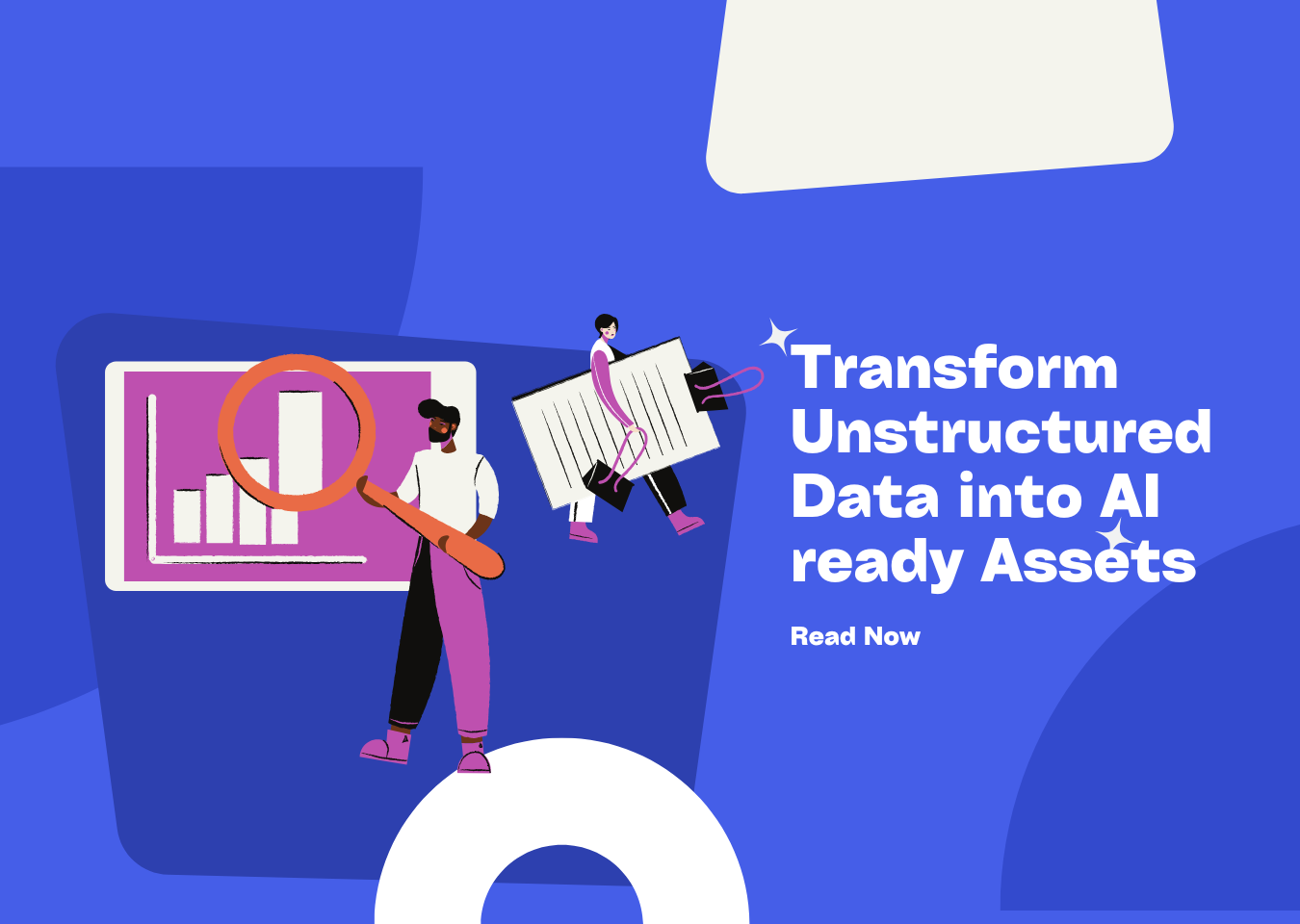Revolutionizing AI: How LLM Data Pipeline Automation is Transforming the Data Landscape


I. Introduction: The Data Deluge and the LLM Revolution
The world is awash in data, a veritable ocean growing larger every day. And Large Language Models (LLMs), powerful AI models capable of understanding and generating human-quality text, are increasingly reliant on this data. But feeding these hungry models requires a robust and efficient system: a data pipeline.
A data pipeline, in the context of LLMs, is the series of processes by which raw data is collected, cleaned, transformed, and prepared for use in training or inference. Enter LLM Data Pipeline Automation, the key to unlocking the true potential of these models. This article explores how automation is revolutionizing the way we handle data for LLMs, making the process faster, cheaper, and more reliable.
II. The Challenges of Traditional Data Pipelines for LLMs: A Manual Maze
Traditional data pipelines involve a series of manual steps, including data ingestion, cleaning, transformation, feature engineering, and storage. These steps, while fundamental, present significant challenges when dealing with the massive scale and complexity required by LLMs. A significant portion of this data often resides in unstructured formats, like documents and PDFs, adding another layer of difficulty.
Consider these pain points. LLMs thrive on vast datasets. They require diverse data types – text, images, audio – each demanding specialized processing techniques. Real-time data streams are increasingly vital for LLM applications that adapt and learn continuously. Moreover, LLMs are notoriously sensitive to data quality; noisy or biased data can severely impact their performance. Ensuring data security and compliance adds another layer of complexity, and scaling these pipelines to handle ever-growing data needs is a constant struggle. These challenges highlight the need for a new approach, one that minimizes manual intervention, excels at processing unstructured data, and maximizes efficiency.
III. The Rise of LLM Data Pipeline Automation: A New Paradigm
LLM Data Pipeline Automation offers a solution to these challenges by streamlining the entire data pipeline process. Automation replaces manual tasks with intelligent systems that can handle data ingestion, cleaning, transformation, and feature engineering with minimal human intervention.
The benefits are numerous. Increased efficiency leads to faster data processing and model training. Automated data cleaning and validation improve data quality. Reduced manual effort translates to lower operational costs. Enhanced scalability allows you to handle growing data volumes with ease. Faster time-to-market enables you to deploy LLM applications more quickly, and better data governance ensures data security and compliance. In essence, automation empowers organizations to harness the full potential of LLMs without being bogged down by the complexities of traditional data pipelines.
IV. Key Technologies and Techniques for LLM Data Pipeline Automation: The Automation Arsenal
Several key technologies and techniques are driving the adoption of LLM Data Pipeline Automation.
- A. LLMs for Data Quality: LLMs themselves can be used to improve data quality. For instance, they can identify and correct errors in data, generate synthetic data for augmentation, and automate data labeling and annotation. Consider it a self-improving cycle, with LLMs refining the very data that trains them.
- B. Automated Feature Engineering: LLMs can automatically extract relevant features from unstructured data using techniques like embeddings and vectorization. These embeddings, numerical representations of data, allow machine learning models to more easily understand the data.
- C. Orchestration Tools: Tools like Apache Airflow and Prefect provide a framework for managing and scheduling data pipeline tasks, ensuring that data flows smoothly and efficiently.
- D. Cloud-Based Data Platforms: Cloud services from AWS, Azure, and GCP offer scalable data storage and processing capabilities, allowing you to handle massive datasets without investing in expensive on-premises infrastructure.
- E. Real-time Data Streaming: Technologies like Kafka and Flink enable real-time data ingestion and processing, crucial for LLM applications that require up-to-the-minute information.
- F. MLOps and DataOps: Applying DevOps principles to machine learning and data management enables automated deployment and monitoring of data pipelines.
- G. Vector Databases: Vector databases such as Pinecone and Weaviate are designed for efficient storage and retrieval of embeddings, enabling fast similarity searches and other vector-based operations.
- H. Data Integration Platforms: Data integration platforms, such as Airbyte and Fivetran, simplify connecting to various data sources and automating data ingestion.
To further enhance your data pipeline, consider UndatasIO, a powerful platform designed to transform unstructured data into AI-ready assets. Unlike basic parsers such as unstructured.io or the LlamaIndex parser, UndatasIO excels in accurately extracting, structuring, and enriching complex documents, making it ideal for building robust RAG (Retrieval-Augmented Generation) pipelines and other AI applications. With UndatasIO, you can unlock the hidden value within your unstructured data, paving the way for more intelligent and insightful AI solutions.
V. Real-World Use Cases: Automation in Action
LLM Data Pipeline Automation is transforming industries across the board.
- Healthcare: Automating the extraction of information from medical records, such as patient history, diagnoses, and treatments.
- Finance: Detecting fraud and analyzing financial data to identify trends and anomalies.
- E-commerce: Personalizing recommendations and improving customer service by analyzing customer behavior and preferences.
- Marketing: Automating content creation and sentiment analysis to optimize marketing campaigns.
- Legal: Automating document review and contract analysis to reduce the time and cost of legal processes.
Imagine the possibilities in these scenarios with clean, structured data extracted by UndatasIO powering these LLM applications!
VI. Best Practices for Implementing LLM Data Pipeline Automation: Keys to Success
Implementing LLM Data Pipeline Automation effectively requires careful planning and execution.
- A. Define Clear Goals: Identify the specific problems you want to solve with automation.
- B. Choose the Right Tools: Select technologies that are appropriate for your data and infrastructure. For processing unstructured data, evaluate solutions like UndatasIO for their accuracy and ability to generate AI-ready outputs.
- C. Invest in Data Quality: Ensure that your data is accurate, complete, and consistent.
- D. Implement Robust Monitoring: Track the performance of your data pipelines and identify potential issues.
- E. Prioritize Security and Compliance: Protect sensitive data and comply with relevant regulations.
- F. Foster Collaboration: Encourage collaboration between data scientists, data engineers, and other stakeholders.
- G. Embrace Continuous Improvement: Continuously evaluate and optimize your data pipelines.
VII. The Future of LLM Data Pipeline Automation: Glimpses of Tomorrow
The future of LLM Data Pipeline Automation is bright, with several emerging trends poised to further transform the field.
- Self-Healing Pipelines: Pipelines that can automatically detect and fix errors, minimizing downtime and ensuring data integrity.
- AI-Powered Pipeline Optimization: Using AI to optimize pipeline performance, dynamically adjusting parameters to maximize efficiency.
- Edge Computing: Processing data closer to the source, reducing latency and improving real-time performance.
- Low-Code/No-Code Automation: Making automation accessible to a wider range of users, regardless of their technical expertise.
These trends suggest a future where data pipelines are not only automated but also intelligent and adaptable, capable of handling the ever-increasing demands of LLMs. As the volume and complexity of unstructured data continue to grow, solutions like UndatasIO will play an increasingly critical role in enabling organizations to leverage this valuable resource.
VIII. Conclusion: Embrace the Automation Revolution
LLM Data Pipeline Automation is no longer a luxury but a necessity for organizations looking to leverage the power of Large Language Models. By automating data workflows, businesses can improve efficiency, data quality, and scalability, ultimately accelerating the development and deployment of AI-powered applications. Embrace the automation revolution and unlock the full potential of your data. And remember, for unparalleled unstructured data processing, UndatasIO offers a robust and reliable solution.
IX. Call to Action
Ready to transform your data pipelines and unlock the power of your unstructured data?
- Learn more about LLM Data Pipeline Automation.
- Explore relevant tools and technologies.
- Try UndatasIO today and see how it can revolutionize your AI workflows: Learn More
- Contact us for assistance with implementing automation.
- Leave your comments and questions below!
📖See Also
- In-depth Review of Mistral OCR A PDF Parsing Powerhouse Tailored for the AI Era
- Assessment-Unveiled-The-True-Capabilities-of-Fireworks-AI
- Evaluation-of-Chunkrai-Platform-Unraveling-Its-Capabilities-and-Limitations
- IBM-Docling-s-Upgrade-A-Fresh-Assessment-of-Intelligent-Document-Processing-Capabilities
- Is-SmolDocling-256M-an-OCR-Miracle-or-Just-a-Pretty-Face-An-In-depth-Review-Reveals-All
- Can-Undatasio-Really-Deliver-Superior-PDF-Parsing-Quality-Sample-Based-Evidence-Speaks
Subscribe to Our Newsletter
Get the latest updates and exclusive content delivered straight to your inbox